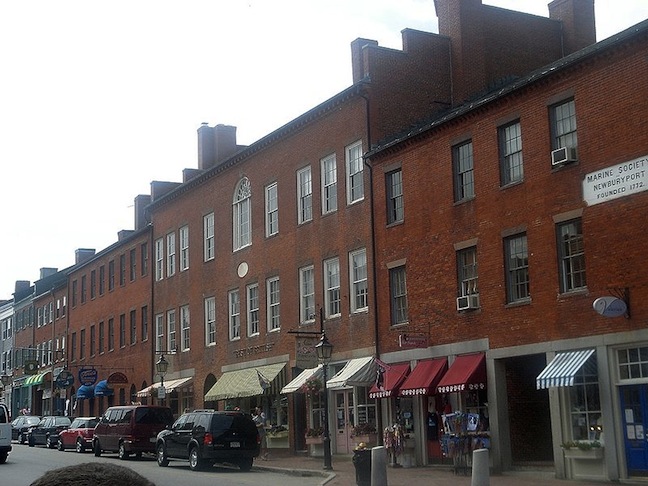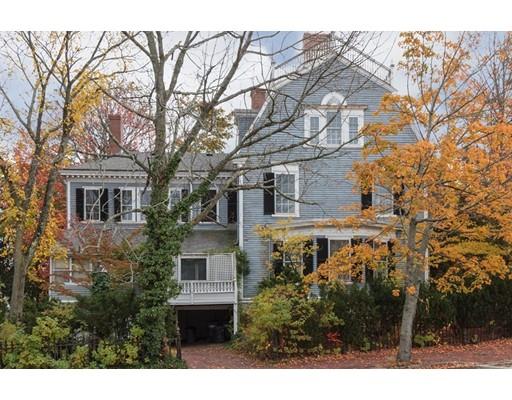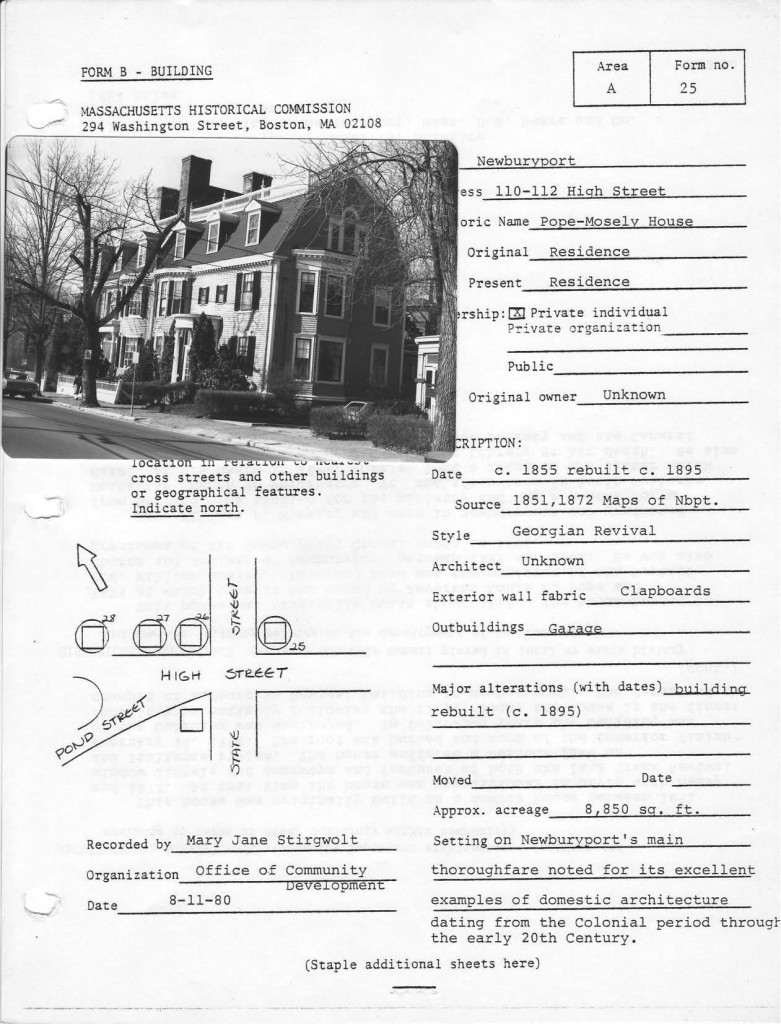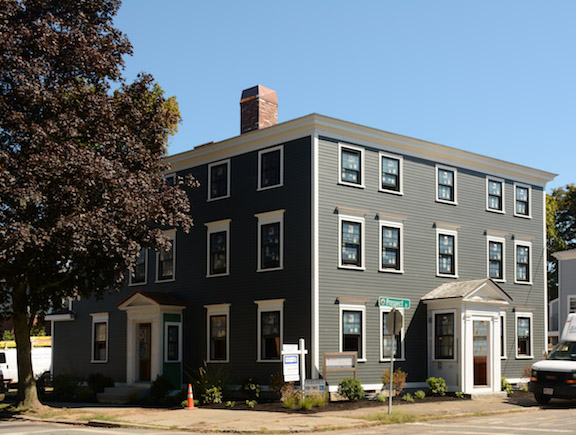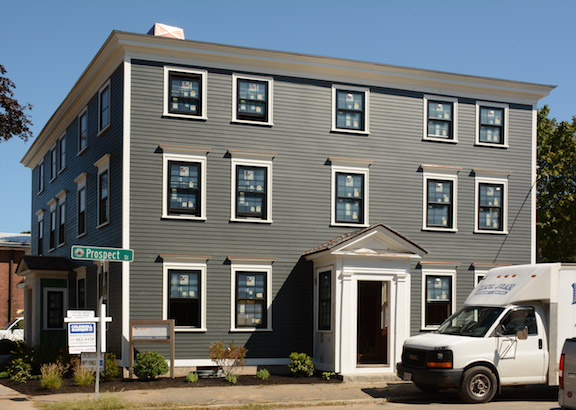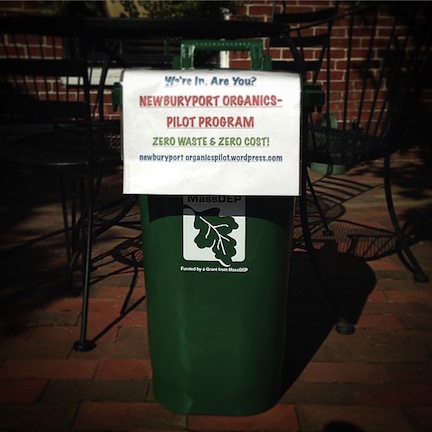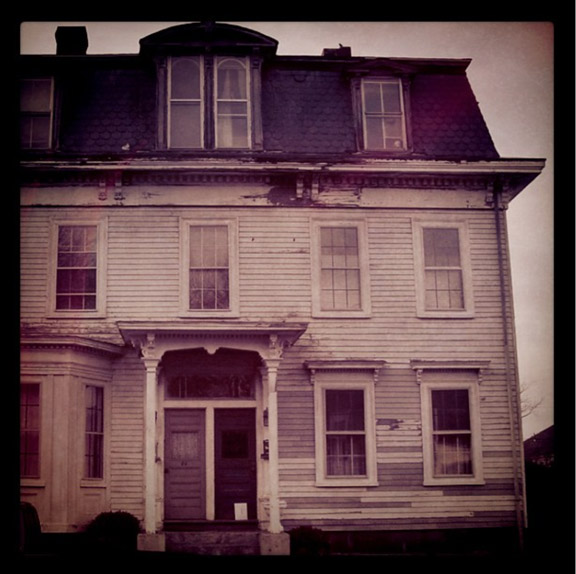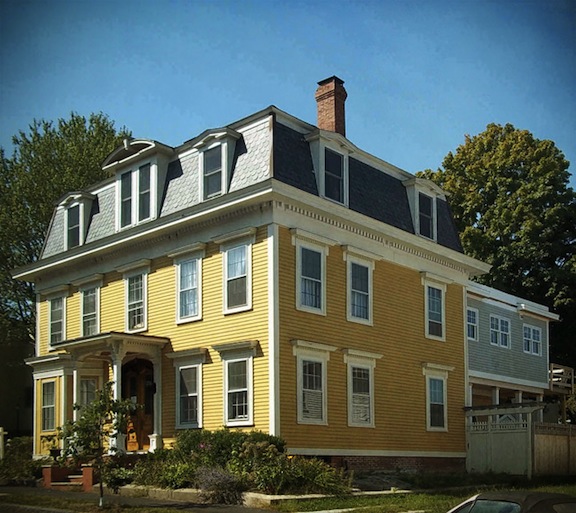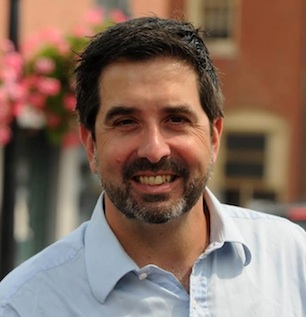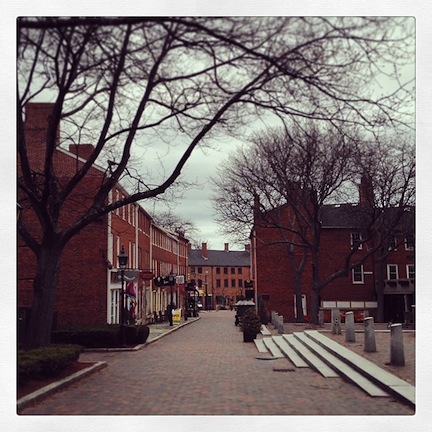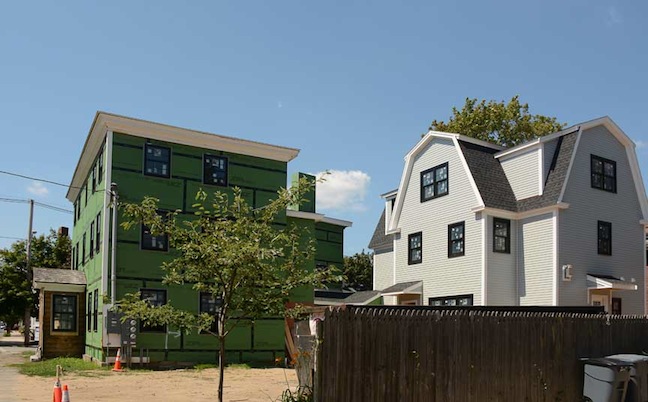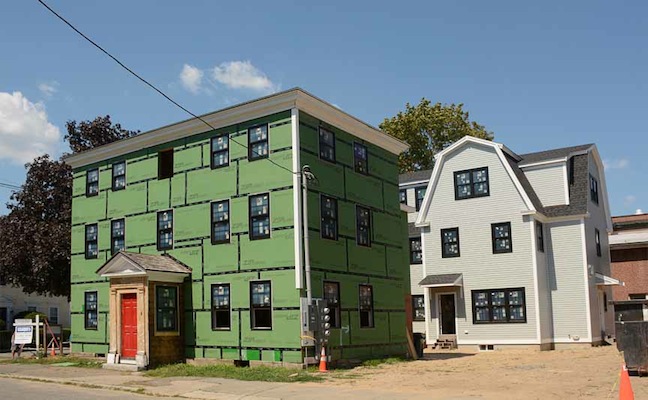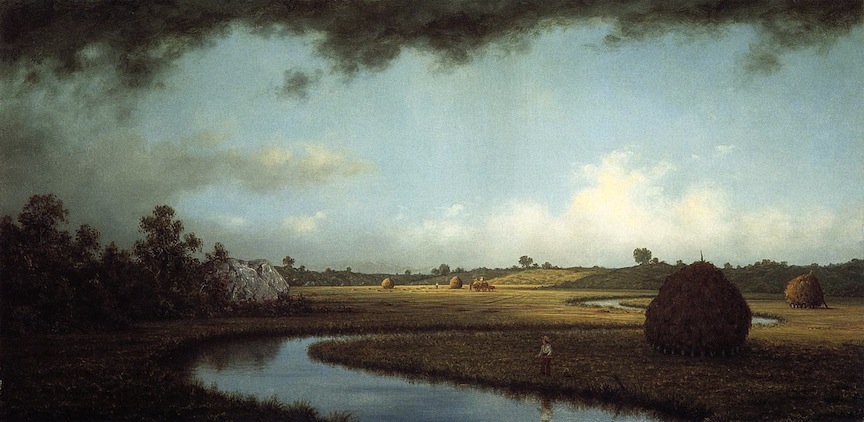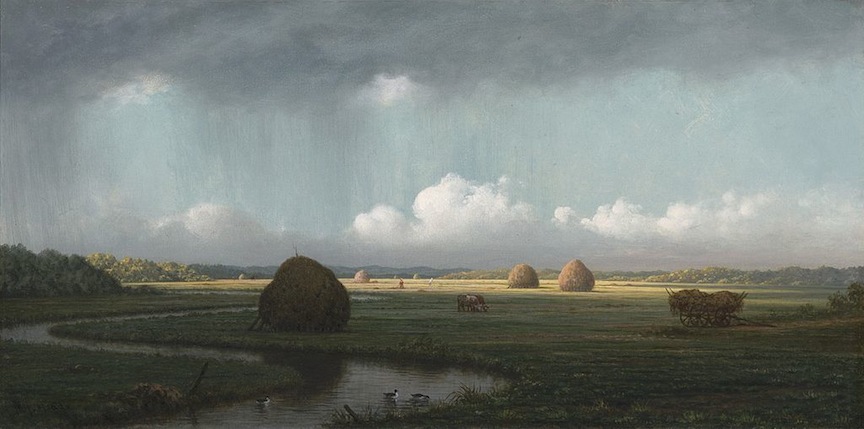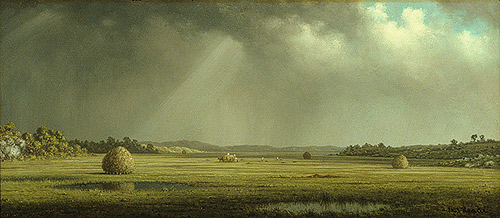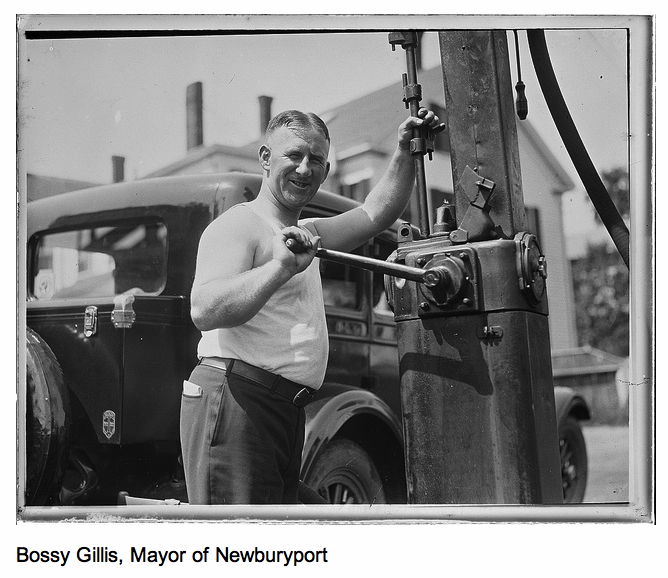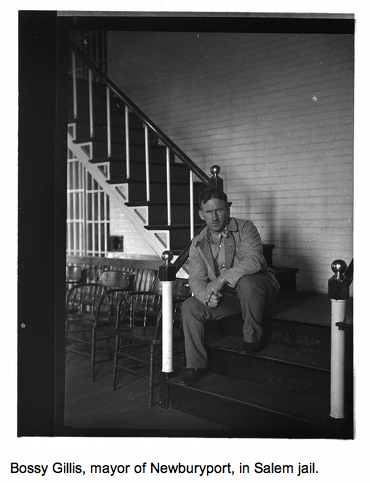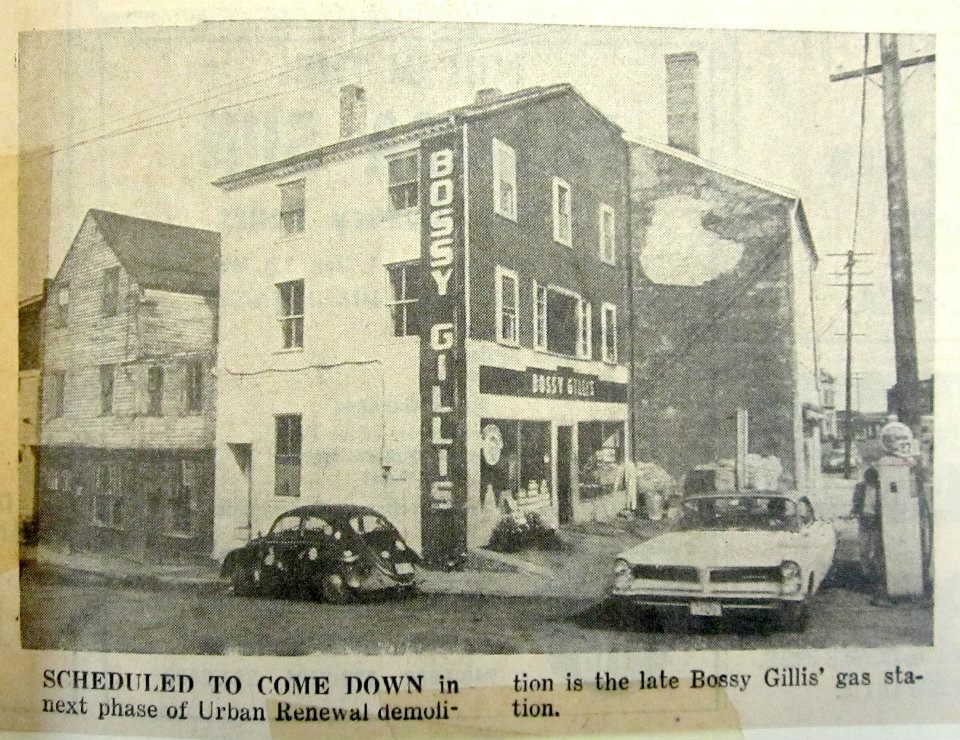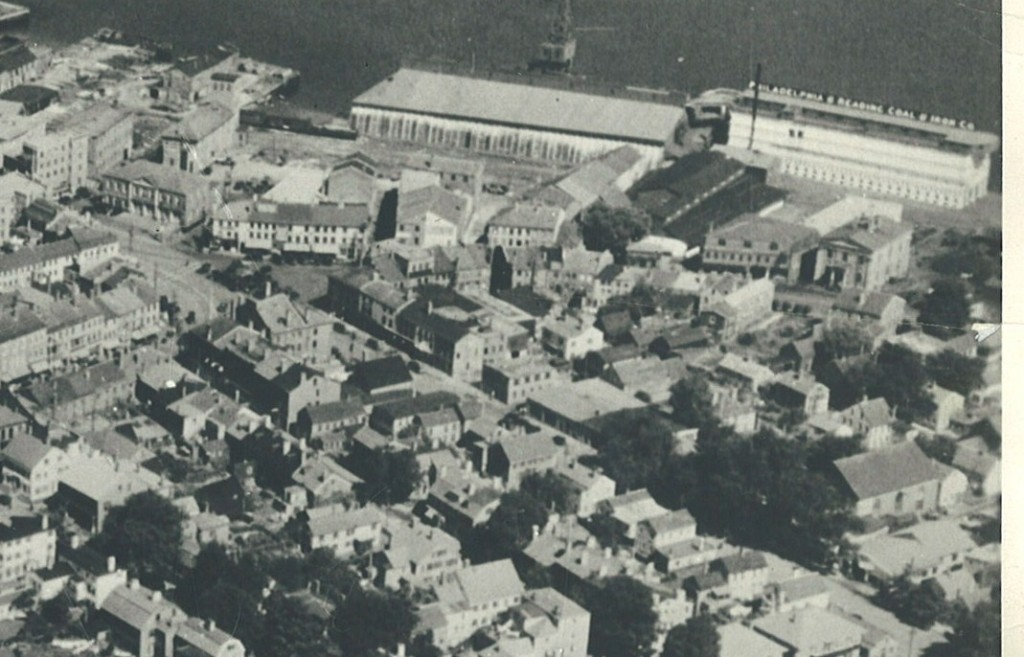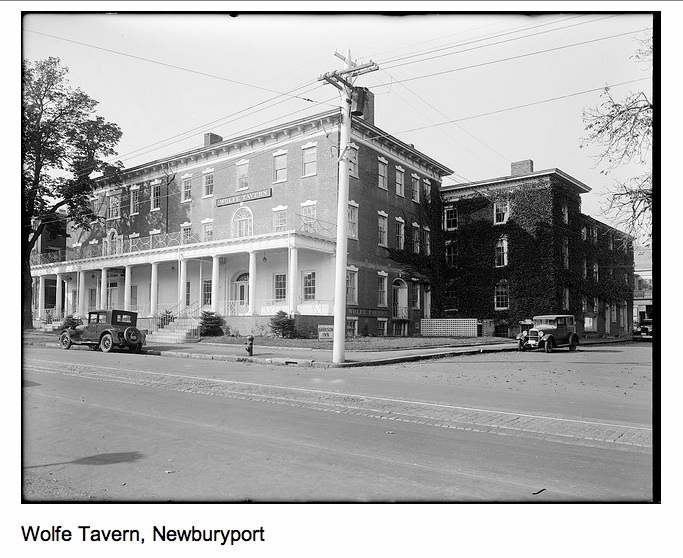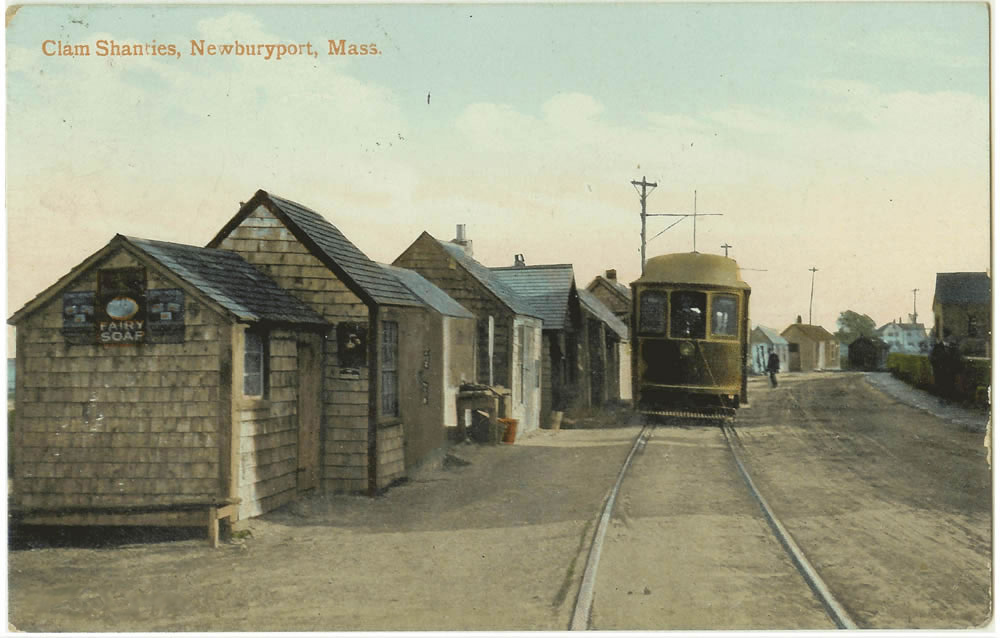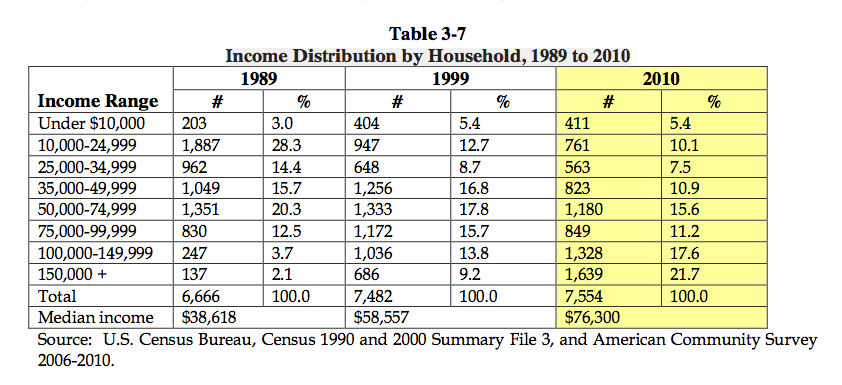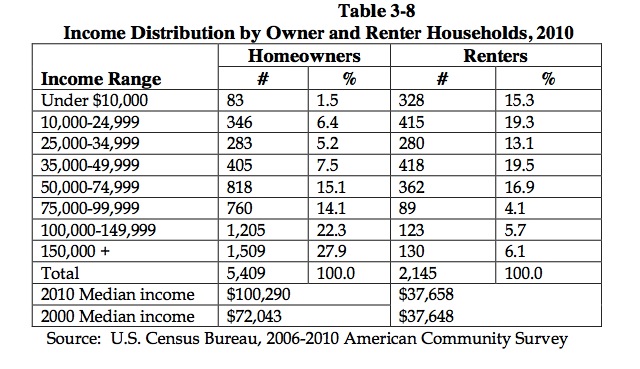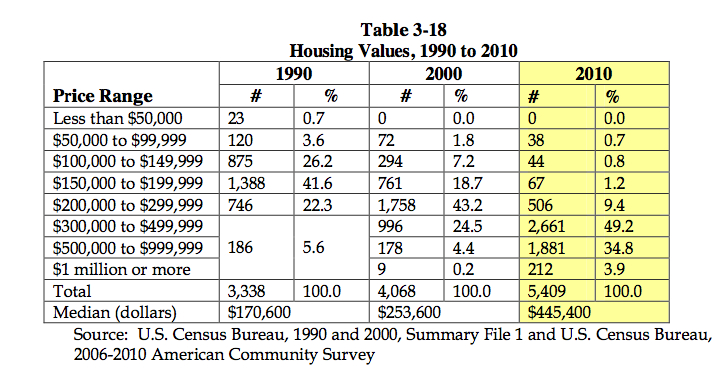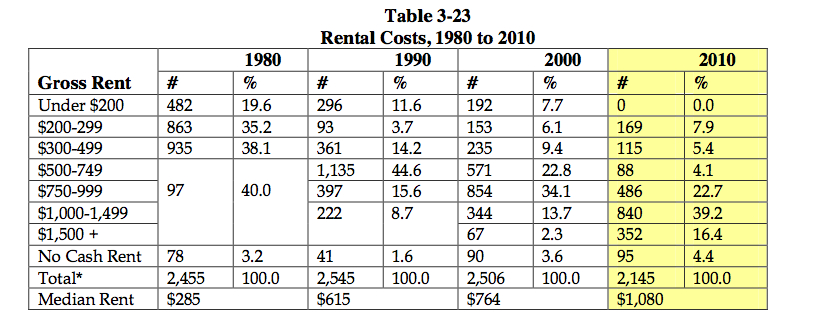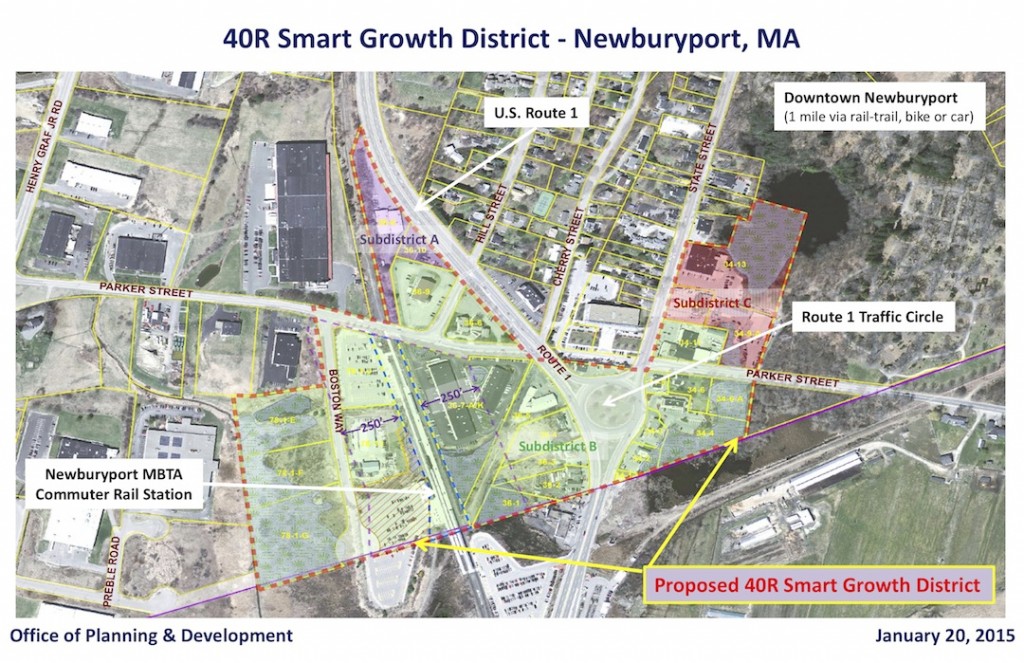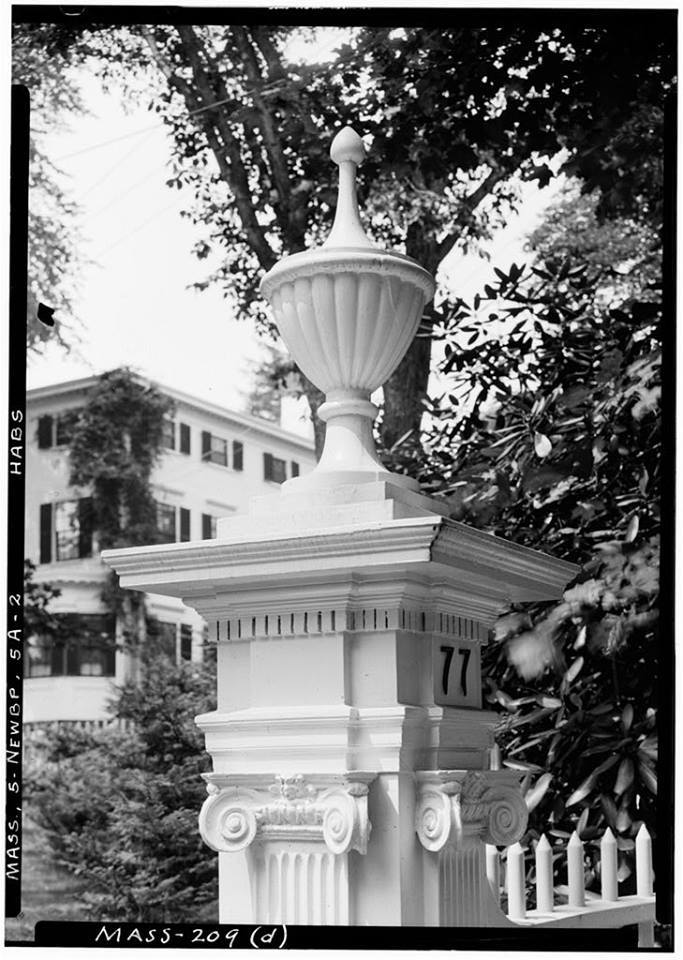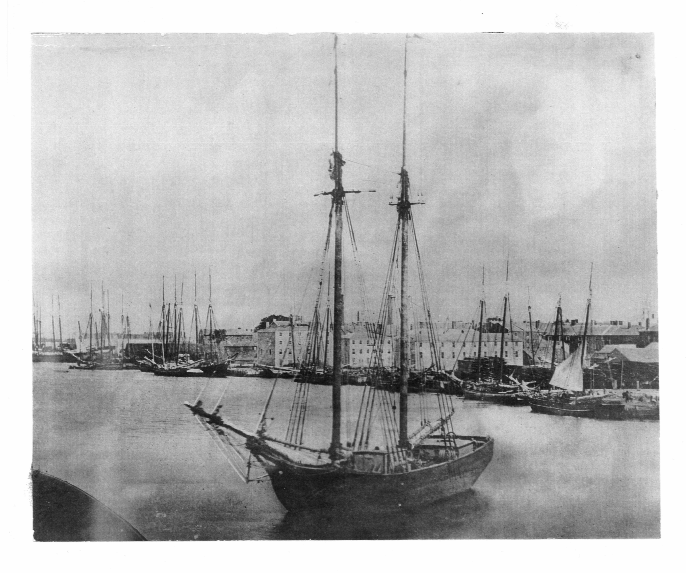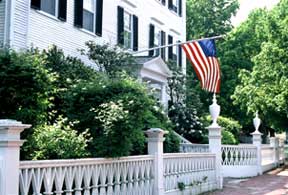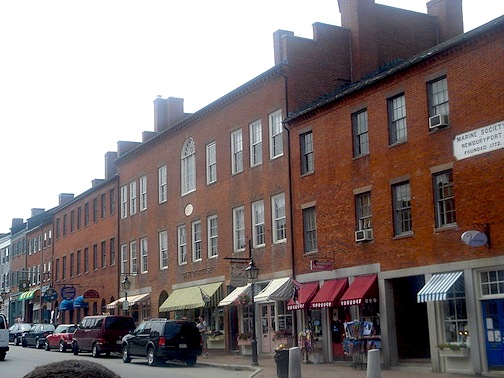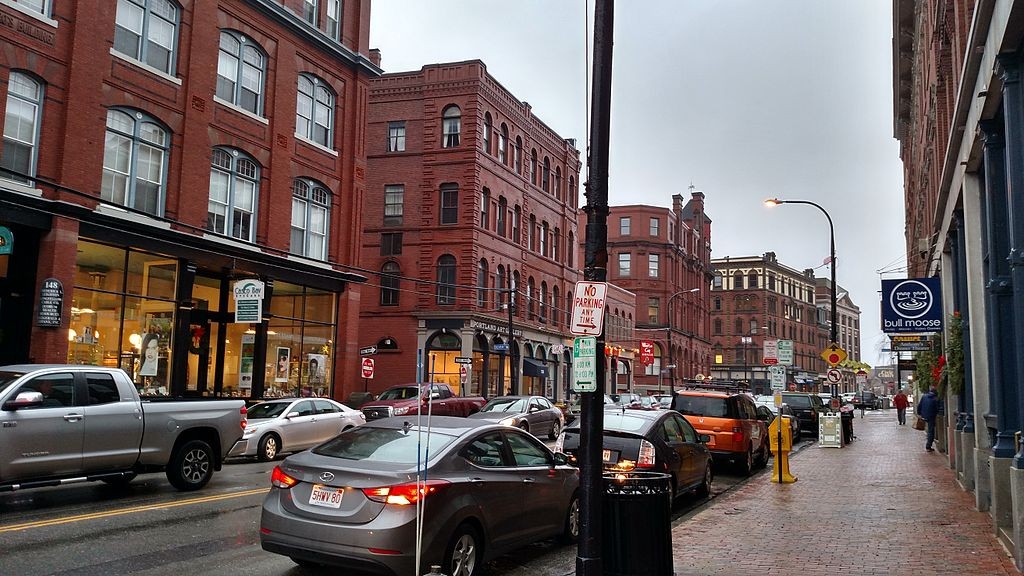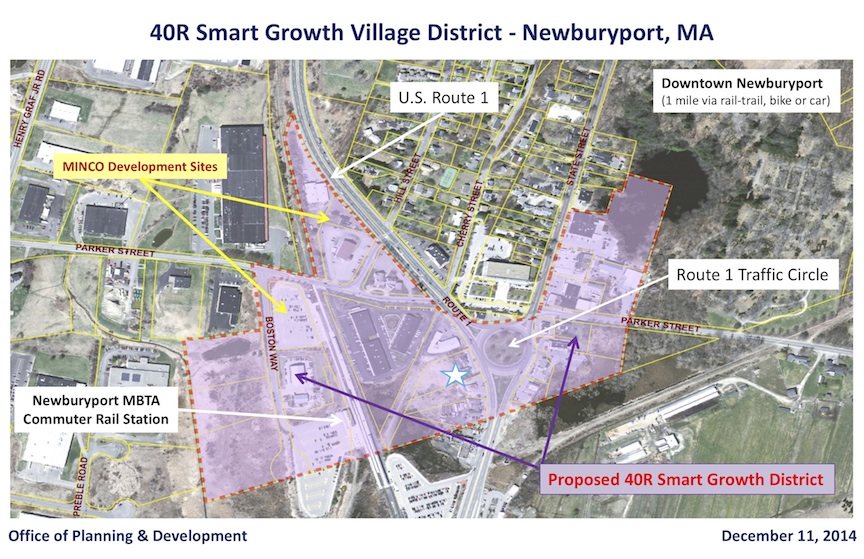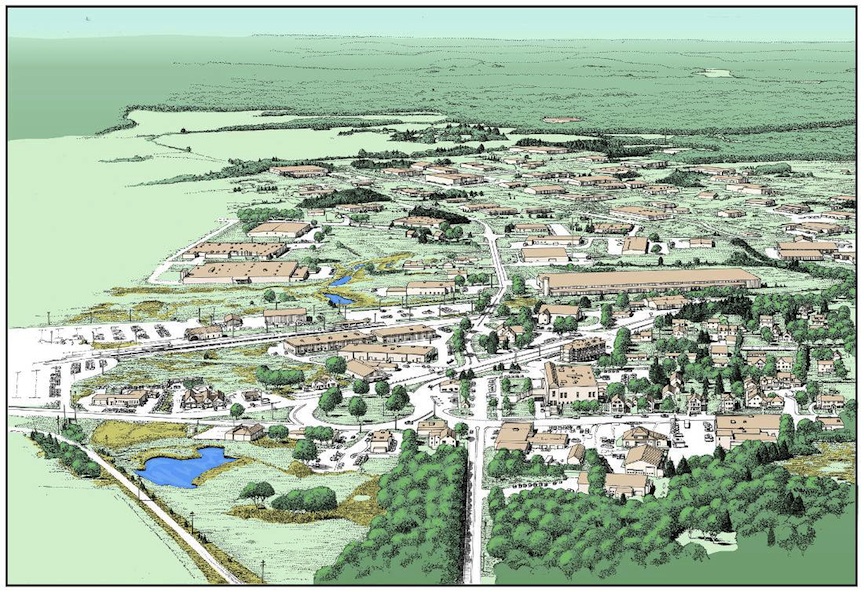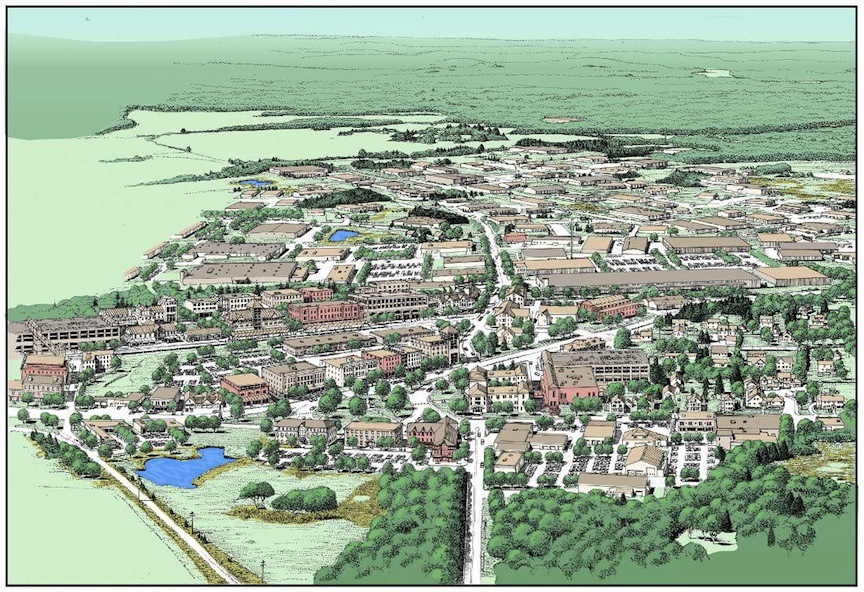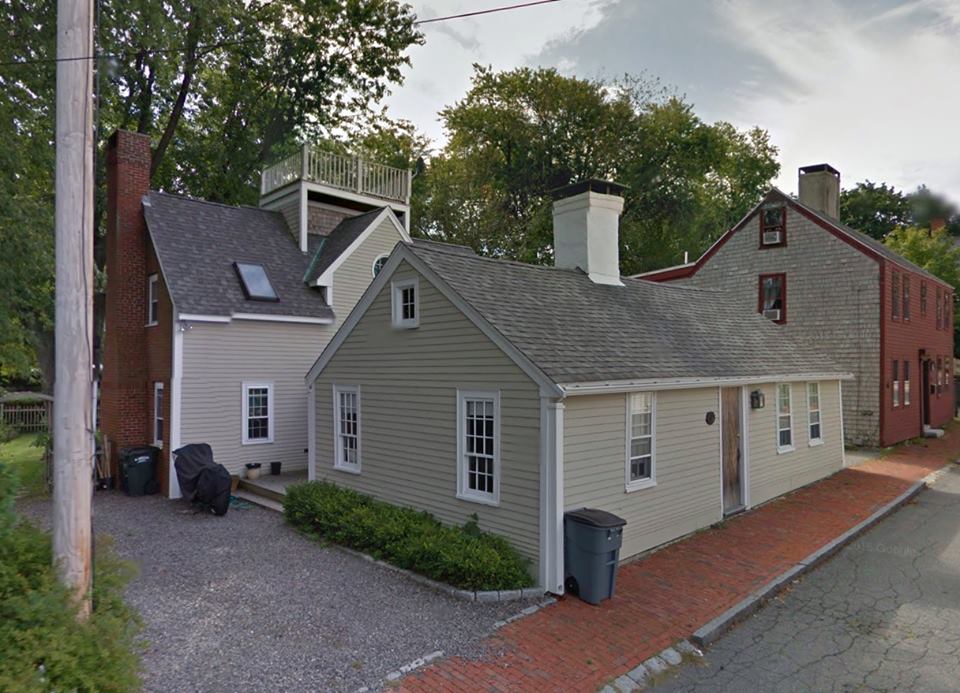
Madison Street, Newburyport, Google Maps, a modern addition to a historic home
I’ve thought about this a lot, a whole lot (see many previous posts). The Newburyport Preservation Trust has standards that are a 10. My standards are a 2 hoping for a 5. And I have been thinking, that the The Secretary of the Interior’s Standards for historic preservation, that is the standard for historic preservation in the United States, may need to be re-thought and re-evaluated for our city, Newburyport, MA – heretic that I may be.
And I’ve been thinking that the mission of historic preservation in Newburyport might also need to be rethought and re-evaluated.
Alex Dardinski has pointed out that every historical house in Newburyport went through a process of adaption when indoor plumbing became available. Alex has pointed out that, “It was a modern amenity that changed domestic life. And I am sure that none of us want a home so historically pure that we have to pee in an outhouse.” And his thought is that, “Ultimately, houses must remain relevant,” and that we are in a cultural sea-change that is the equivalent to the advent of indoor plumbing.
Alex’s other thought is that it would be a mistake to lock homes into one era of history, which is what the The Secretary of the Interior’s Standards calls for. For historic preservationists, this would be a radical way of thinking.
I like houses in Newburyport that have been added onto, that are a mixture of different eras, because it tells the story of not only the house, but of the people in Newburyport who inhabited that house. And I like the idea that a modern addition to a house, if done thoughtfully, is adding to the story, not destroying the historic integrity of the home.
My first draft of a new mission statement for Newburyport’s historic preservation might be, “A thoughtful renovation that honors the past, makes a property relevant in the present, and preserves its story for future generations.”
